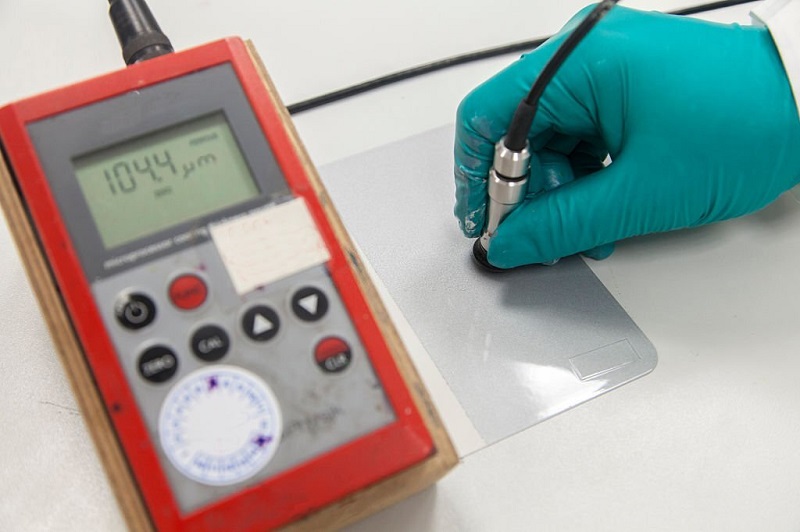The Ultimate Guide To The Elcometer Coating Thickness Gauge
- 05:01
- By Aussie’s Mag
- 0 Comments
If you’ve been in the industrial coatings industry long enough, you’ve likely heard of the elcometer coating thickness gauge. But what exactly can this device do, and how does it work?
Learn more about the elcometer coating thickness gauge, its capabilities, and much more below in this ultimate guide to the elcometer coating thickness gauge.
How Do You Determine The Thickness Of A Dry Film?
A film's DFT can be determined using destructive and nondestructive thickness measurements. Nondestructive coating thickness measures work with stainless steel and aluminium. Metal surfaces benefit from digital elcometer coating thickness gauge. Non-conductive coatings on non-ferrous metals use eddy current, while non-magnetic coatings on steel use electromagnetic induction.
Instruments for Measuring Coating Thickness
Elcometer coating thickness gauge measures dry film thickness. Elcometer's destructive coating thickness gauges include the 121/4 Paint Inspection Gauge. P.I.Gs measure dry film thicknesses on substrates other than metal. Elcometer non-destructive coating thickness gauges use various probes and calibration foils. These gauges test dry films.
 |
Elcometer Coating Thickness Gauge |
Mechanical Coating Thickness Gauges
Elcometer coating thickness gauge measure dry coatings at a reasonable price. A mechanical Coating Thickness Gauge is best for working in dangerous conditions such as high temperatures, combustible atmospheres, high water pressure, or an increased risk of explosion from utilising an electronic instrument. The Elcometer 211, or "banana gauge," is a more accurate coating thickness gauge for cold and submerged surfaces. The basic Elcometer 101 gives instant readings.
Digital Coating Thickness Gauges
Digital coating thickness gauges from the Elcometer series are unparalleled in their ability to measure coating thickness on virtually any substrate, regardless of whether or not.
Introducing the Elcometer 456 Coating Thickness Gauge
Learn how the 456 elcometer coating thickness gauge can help you. The Elcometer 456 integrated and separate variants are shown in this video, taking non-destructive coating thickness measurements across various uses.
Elcometer 415 Paint and Powder Thickness Gauge for Industrial Use
The new Elcometer 415 makes it easy to measure elcometer coating thickness gauge thickness on curved, smooth, thin, ferrous, and non-ferrous substrates without requiring lengthy instructions. If you need to test items on the assembly line or perform primary quality control in the field, the Elcometer 415 is the tool for you.
 |
| Automotive Paint Meter |
Elcometer 311 Automotive Paint Meter
Learn about the features and benefits of the Elcometer 311 Automotive Paint Meter. Watch as the Elcometer 311 measures the thickness of paint without damaging metal automobile panels made of steel and aluminium. Now more than ever, it is possible to quickly and easily spot instances of covert rework in the automobile industry.
Explain The Operation Of A Coating Thickness Gauge
It is possible to use a digital elcometer coating thickness gauge to measure the thickness of a dry film on either a magnetic steel surface or a non-magnetic metal surface, such as stainless steel or aluminium. Nonmagnetic coatings on magnetic substrates like steel rely on the idea of electromagnetic induction. Non-conductive coatings on non-ferrous metal substrates can be created using the eddy current principle.
 |
| Elcometer Coating |
Electromagnetic Induction Coating Thickness Gauges
Elective electromagnetic induction measures magnetic substrates with elcometer coating thickness guage The gadget powers the middle coil and the outside loops measure magnetic fields. A periodic output signal vibrates the instrument's core coil.
The magnetic field cuts through the other two coils equally when magnetic materials do not affect the probe. As the search nears the uncoated substrate, more field cuts the closest coil and fewer cuts the farthest wave, making the area uneven. Ring voltage difference measures substrate distance.
The importance of Coating Thickness Gauge Calibration
During production, manufacturers calibrate the elcometer coating thickness gauge to fine-tune the settings and guarantee the meter will function to the specified accuracy level. For this technique to work correctly, the coating thickness gauge must be calibrated to known thickness values and tested at regular intervals. Contemporary electronic instruments typically have a memory that stores values at important places over the coating thickness range for use as reference points.
Conclusion
The elcometer coating thickness guage can be optimally set up for the working conditions. In addition to variations in material, shape, and surface finish, the adjusting process may also be performed in a scorching environment or in the presence of a random magnetic field. The ensuing mistakes can be considerably reduced or avoided by adjusting the coating thickness gauge to the existing conditions.





0 comments
Note: only a member of this blog may post a comment.